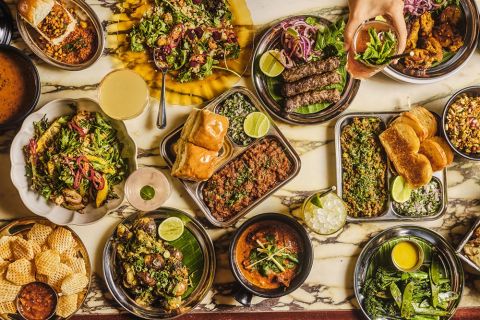
Made in Britain, Inspired by India. How Dishoom is Putting British Hospitality on the Global Map
AG&G’s Michael Penfold on why Dishoom’s next move could redefine the reputation of British hospitality on a global stage.
It has recently been reported that Din Tai Fung (international restaurant business of Taiwanese origin) generates $27 million per-annum per-restaurant in the US. Now, as Dishoom gets ready to join Berenjak and Chotto Matte in crossing the Atlantic, the question is whether British hospitality can finally play on the same stage.
Let’s circle back to those numbers that are quite frankly staggering, Din Tai Fung’s US restaurants each generate around $27.4 million a year. That’s roughly half a million dollars a week, per site. In restaurant terms, that’s not performance—it’s nothing short of perfection.
Now let’s turn to Dishoom. With 15 restaurants across the UK and a recent £300 million valuation (a cool £20m per site), for a restaurant group that started as a love letter to Bombay’s Irani cafes and a symbol of multi-cultural Britain, it’s achieved what few British restaurant brands have: cult-like devotion at home and serious investor confidence abroad. Its recent partnership with an LVMH-backed investment firm (owners of Louis Vuitton and Moët amongst other major luxury brands) is a statement of intent. The plan? To crack America and beyond, starting with New York next year.
It’s an audacious step—and one that’s part of a long overdue shake up of the global restaurant landscape. British hospitality has no shortage of talent, often inspired by immigration and cultures beyond our shores, but it can suffer from chronic modesty. While American and Asian brands scale with swagger, we tend to perfect, polish, and hesitate. Dishoom’s move stateside is part of a watershed moment along with restaurant concepts such as Berenjak and Chotto Mate who have created huge success in the UK before expanding into the US.
Because let’s be clear: Dishoom isn’t just any restaurant brand. It’s a masterclass in narrative and nostalgia, marrying immaculate service with emotional storytelling. Every detail- from the quality of the food to fit out of its restaurants- feels considered, deliberate, and most importantly, genuine. That’s exactly the sort of experience diners, weary of corporate polish, are desperate for and will pay top dollar to frequent over and over again.
But the US market doesn’t reward timidity. Din Tai Fung didn’t reach its stratospheric numbers by expanding tentatively without taking risks—it has done so through relentless consistency and cultural resonance. If Dishoom wants to join that club, it needs to go in with the same conviction: quality over quantity, yes, but also scale over sentiment and perhaps most importantly, identifying the right locations.
The New York opening isn’t just another site—it’s a litmus test. Can a popular British hospitality brand with huge growth potential export its excellence without watering it down? Can a brand built on subtlety and soul survive in a market built on noise and speed?
If Dishoom can pull it off, it will mark more than a successful expansion—it’ll be further proof that British hospitality has finally shed its small-is-beautiful complex. Because when it comes to global potential, the numbers are there for the taking. Din Tai Fung has shown the ceiling. Dishoom might just be the one to smash through it.
And if it does, the next hospitality giant won’t be stamped “Born in the USA” or “Made in Taipei.” It’ll be unmistakably British.